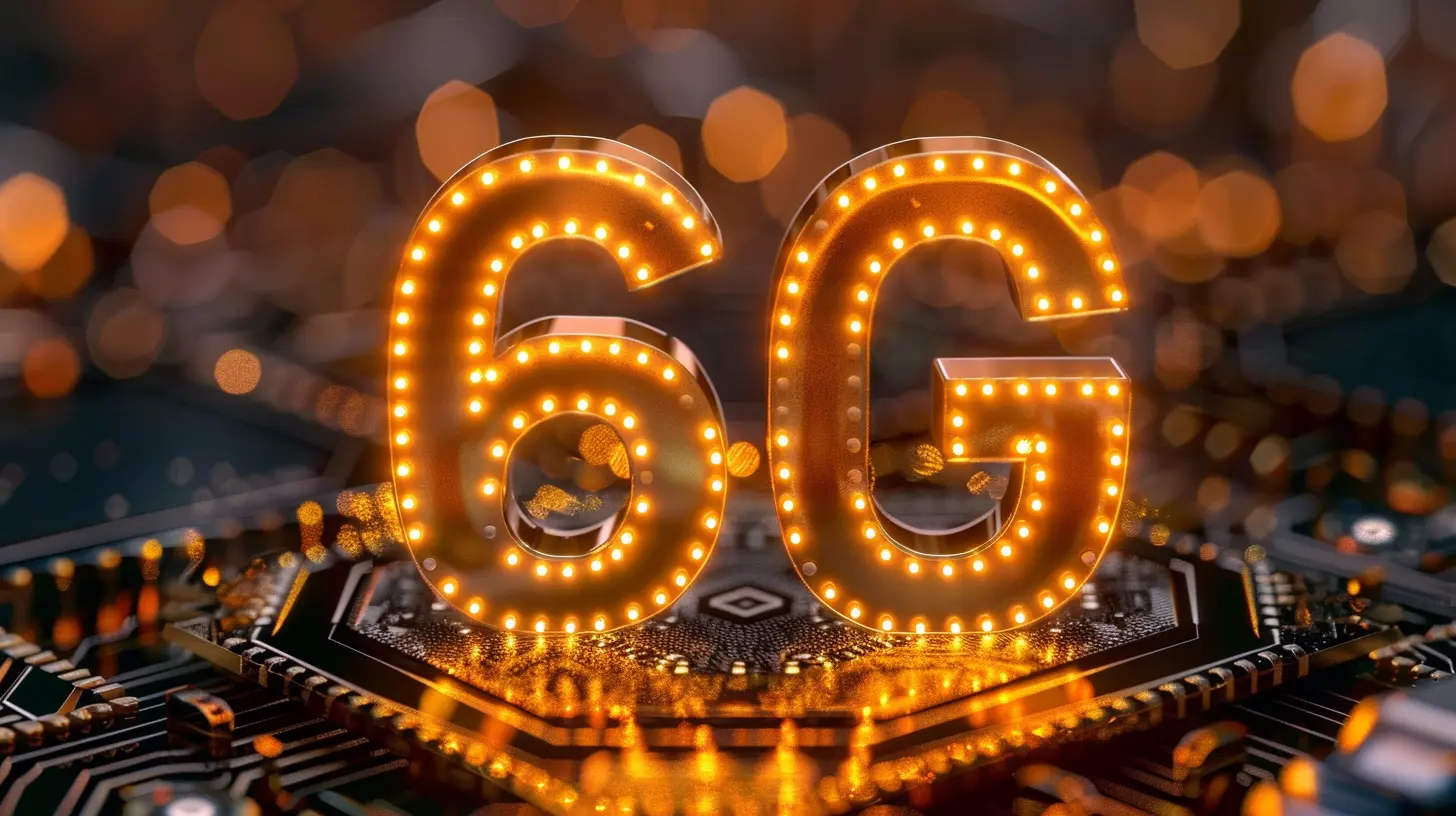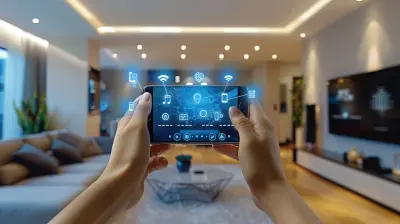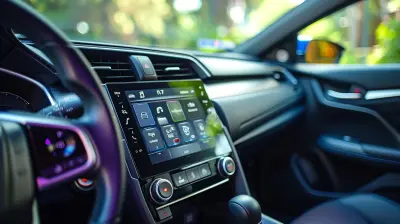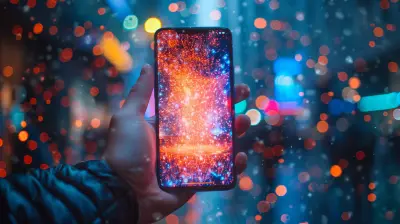5 February 2025
The future is coming in fast, and it's bringing 6G with it. Now, I know what you're thinking— "Wait, we just got used to 5G, and now 6G is already on the horizon?" Yup, that's how fast technology moves these days. But what exactly is 6G, and why should you care? Well, hold on tight because we’re about to dive into how 6G will change, and I mean seriously change, the way we experience mobile connectivity.

What Is 6G?
Before we get into the technical nitty-gritty, let’s start with the basics. So, what exactly is 6G? Simply put, 6G is the sixth generation of mobile network technology. If 5G was a rocket, 6G is the spaceship that’s about to take us to Mars.6G is expected to offer speeds up to 100 times faster than 5G, with incredibly low latency—so low that it’s practically non-existent. That means faster data transfer, smoother streaming, and much more efficient communication between devices. But here's the kicker: 6G isn't just about faster internet on your phone. It’s about transforming the entire digital ecosystem.

The Evolution of Mobile Connectivity
To understand the significance of 6G, we need to take a quick trip down memory lane. Remember when 3G first came out? People were thrilled to finally browse the web on their phones, albeit at frustratingly slow speeds. Then 4G LTE came along and blew our minds with faster downloads and video streaming. Fast-forward to the arrival of 5G, and suddenly, we're talking about autonomous cars, smart cities, and augmented reality.Now, here comes 6G, which will build on the foundation laid by 5G but take things to an entirely new level—think of it like the difference between a flip phone and a smartphone. It's not just an upgrade; it's a whole new way of thinking about mobile connectivity.

Key Features of 6G
1. Mind-Blowing Speed
Let’s be honest, we all want faster internet. Whether you're binging Netflix or downloading massive files, speed matters. With 6G, the speed leap is massive. We’re talking about data rates reaching up to 1 terabyte per second. Imagine downloading a full-length 4K movie in just a couple of seconds. Crazy, right?But it’s not just about streaming movies faster. This kind of speed opens up new possibilities for industries like gaming, healthcare, and even education. We're talking real-time everything—no more lag, no more buffering. Just instant, seamless connectivity.
2. Ultra-Low Latency
Latency, in simple terms, is the delay between sending and receiving data. With 5G, we’ve already seen a drastic reduction in latency, but 6G will take this to an almost negligible level. We're talking 1 millisecond or less. This is crucial for technologies that require real-time communication, like autonomous vehicles, remote surgeries, and even virtual reality.Imagine a surgeon performing a delicate operation on a patient located halfway across the world with the help of a robot. Every millisecond counts in such situations, and 6G's ultra-low latency will make these things not only possible but practical.
3. Increased Capacity for IoT
The Internet of Things (IoT) is already a big deal, but 6G will turn it into something straight out of a sci-fi movie. We’re moving toward a world where everything is connected—smart fridges, autonomous drones, traffic systems, and even wearable tech that monitors your health 24/7.6G will support massive machine-type communications (mMTC), which means billions of devices will be able to communicate with each other without overloading the network. It’s like giving every single thing in your life its own personal internet connection.
4. AI-Powered Networks
6G will heavily rely on Artificial Intelligence (AI) to manage and optimize networks. AI will help in predicting network demand, adjusting bandwidth, and even fixing issues before they become noticeable. Essentially, we’ll have self-healing networks that are smarter and more efficient.Think of it as having an invisible IT team working around the clock to ensure your internet experience is flawless. No more random outages or slowdowns during peak hours. AI will keep everything running smoothly behind the scenes.
5. 3D Connectivity
This is where things get really futuristic. With 6G, we’ll move beyond the traditional 2D connectivity (that’s your typical ground-based cell towers) and venture into 3D connectivity. That means integrating satellites, drones, and even high-altitude balloons into the network infrastructure.Why does this matter? Well, it means that even the most remote areas of the world—think deserts, mountains, and oceans—will have access to high-speed, reliable internet. No one gets left behind in the 6G revolution.

How 6G Will Transform Our Daily Lives
It’s easy to think of 6G as just the next step in mobile tech, but it’s so much more than that. Here’s how 6G could revolutionize our everyday lives.1. Immersive Experiences
Ever tried VR and thought, “This is cool, but it could be better”? Well, with 6G, VR and AR (augmented reality) will become next-level. We’re talking fully immersive, high-definition experiences with zero lag. You could attend a concert, explore a museum, or even travel to another country—all without leaving your living room.And it’s not just for fun. Imagine virtual classrooms where students can literally step into historical events, or virtual meetings where you feel like you're in the same room as your colleagues despite being miles apart.
2. Healthcare Revolution
6G’s ultra-low latency and high speeds will be a game-changer in healthcare. We’re looking at a future where doctors can perform surgeries remotely with robotic tools that respond in real-time. Patient monitoring will also improve, with wearable devices providing constant data to healthcare professionals.And let’s not forget how 6G could revolutionize telemedicine. With such fast speeds, video consultations will feel just like face-to-face appointments, even in rural areas where connectivity is currently limited.
3. Smart Cities
With 6G, smart cities will become smarter—way smarter. Traffic lights, parking meters, security cameras, and even garbage disposal systems will be connected and communicate with each other. This means more efficient city planning, reduced traffic congestion, and improved public safety.For instance, traffic systems could automatically adjust based on real-time data, reducing jams and accidents. It’s like having a city that thinks for itself and adapts to our needs.
4. Entertainment on Steroids
Streaming a movie or playing an online game will feel like a breeze with 6G. But more than that, 6G will enable entirely new forms of entertainment. Think interactive, multi-sensory experiences where you’re not just watching a movie—you’re part of it.We’re also looking at the rise of holographic streaming. Imagine watching a concert, but instead of seeing it on a flat screen, the artist appears in your living room as a 3D hologram. Yeah, it’s that wild.
5. The Rise of Autonomous Everything
We’ve all heard about self-driving cars, but 6G will take autonomy to a whole new level. Autonomous drones delivering packages, self-driving trucks transporting goods, and even autonomous ships navigating the seas—all of this is within reach with 6G.The real-time data transfer and ultra-low latency of 6G will allow these autonomous systems to operate safely and efficiently, without human intervention. We’re talking about a world where machines can make decisions faster than we can blink.
Challenges Ahead for 6G
Of course, all this futuristic talk doesn’t mean we’re not going to face some challenges. Rolling out 6G will require massive investments in infrastructure, including new towers, satellites, and fiber optics. Plus, there are concerns about privacy and security as networks become more complex and interconnected.And then there’s the issue of spectrum. 6G will need to operate at much higher frequencies than 5G, which means regulators will need to allocate new spectrum bands. This process can be tricky and time-consuming.
Lastly, we have to consider the cost. As amazing as 6G sounds, it’s likely to be expensive at first, both for network providers and consumers. But like all technology, prices will eventually drop as it becomes more widespread.
When Can We Expect 6G?
Now, don’t start refreshing your phone settings looking for 6G just yet. We’re still a few years away from seeing it in action. Most experts predict that 6G will start rolling out around 2030, but research and development are already well underway.The shift from 5G to 6G won’t happen overnight, but when it does, it will be monumental. So, while you enjoy the benefits of 5G for now, just know that something even bigger is on the horizon.
Final Thoughts
6G isn’t just about faster internet and better connectivity—it’s about creating a world where technology integrates seamlessly into our lives. It will reshape industries, redefine how we interact with the digital world, and bring about innovations we can’t even imagine yet.The future of mobile connectivity is bright, and 6G is going to light the way.













Chloe Nelson
Great, just what we needed—more buffering!
March 16, 2025 at 11:29 AM